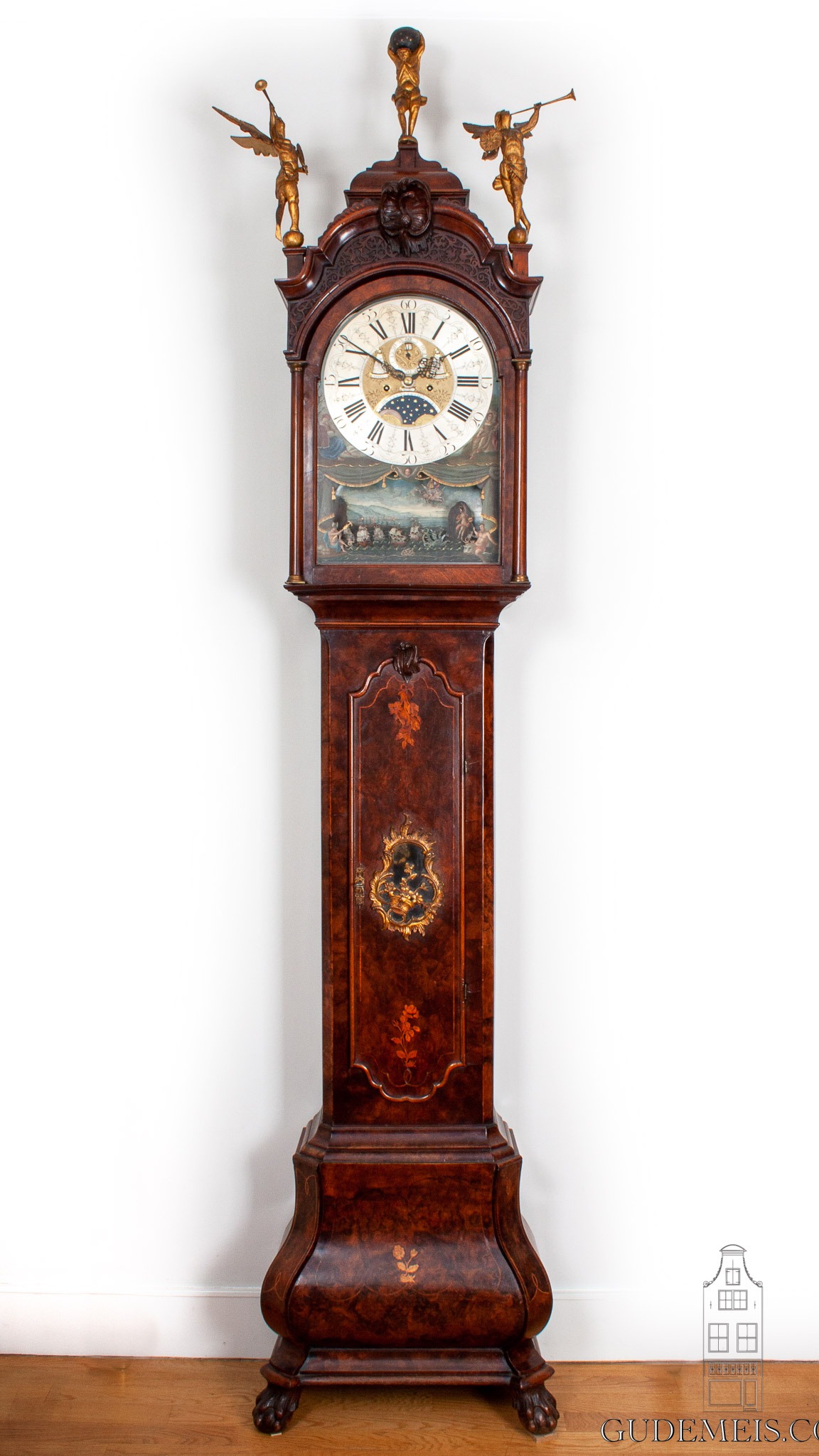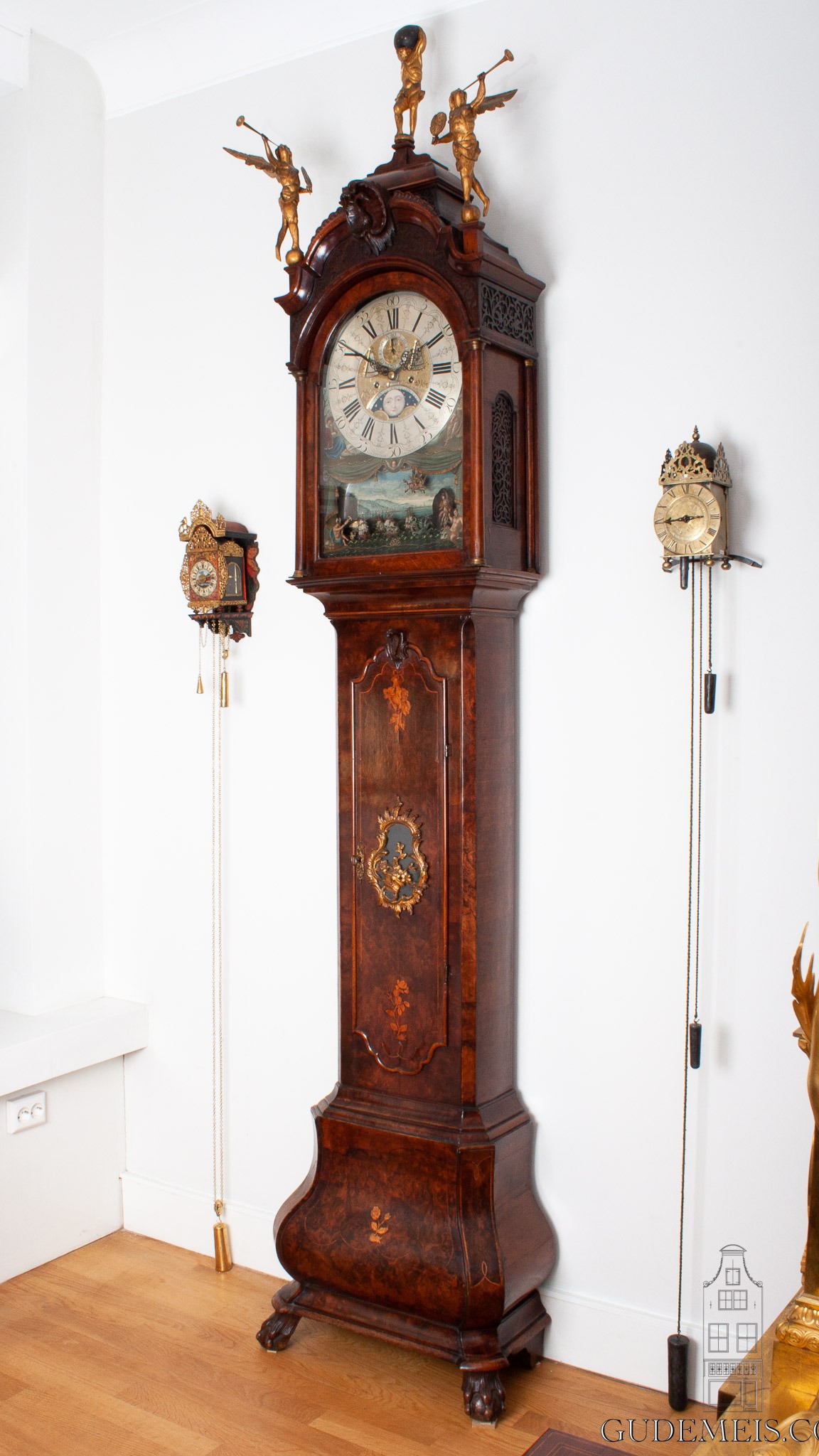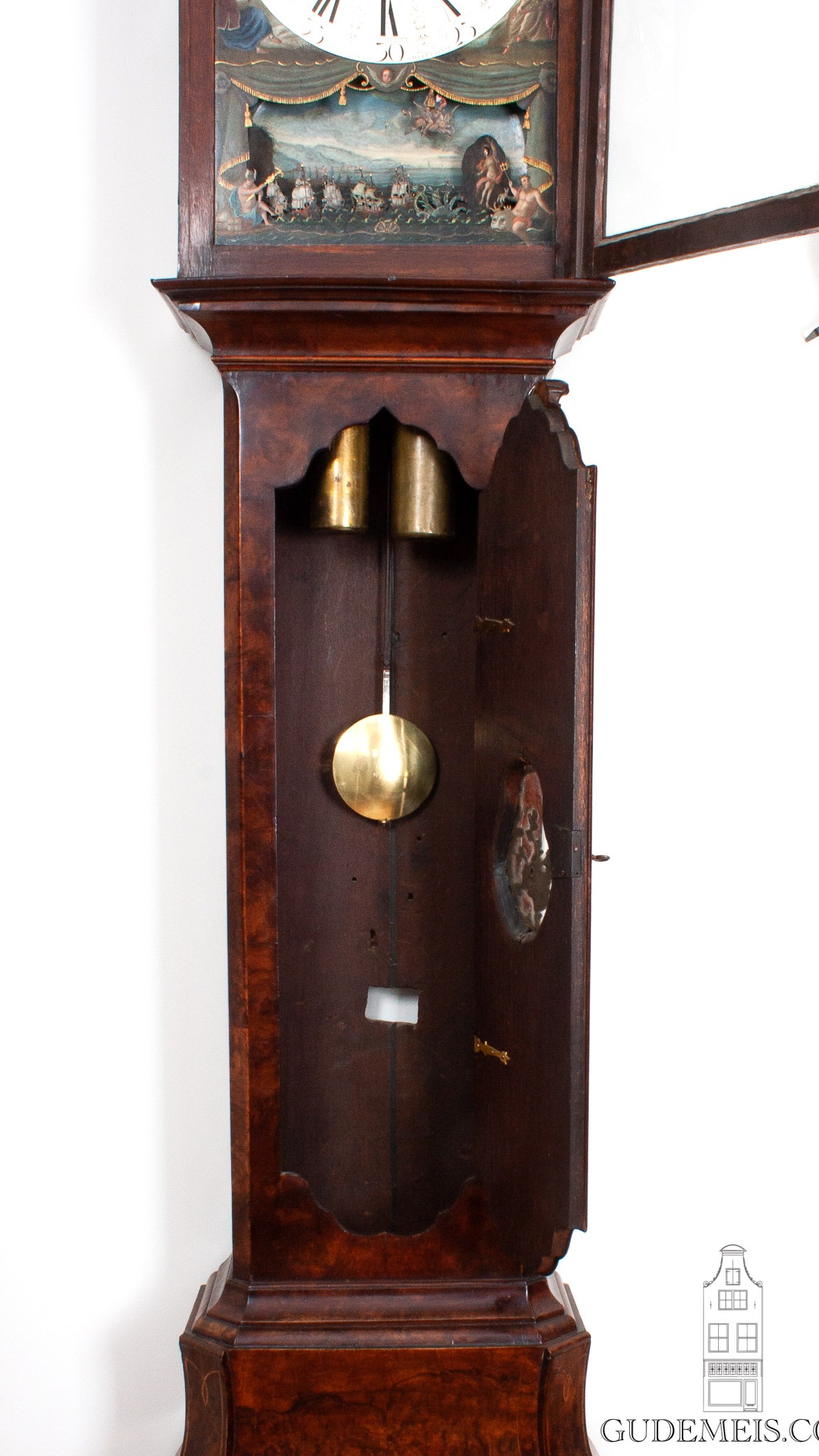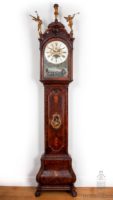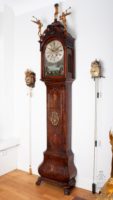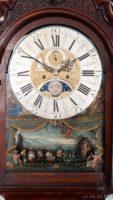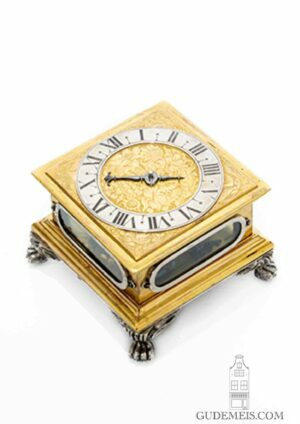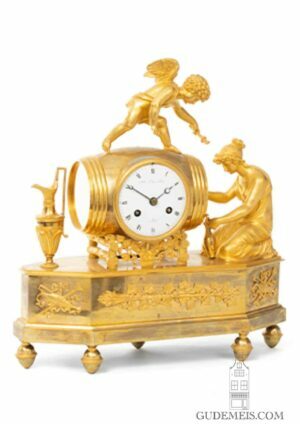A fine Dutch burr walnut Amsterdam longcase clock with ships automaton, Jan Henkels, circa 1760.
Description
The story
The Dutch developed a type of longcase clock that was made to impress the beholder and show off the prosperity of the owner. The influence of French furniture changed the earlier longcase clocks based on the English examples into a high clock with bombé base and curvilinear hood veneered with well figured burr walnut. These cases housed well functioning movements often with many calendar indications and a moon phases. To impress even more some of these had musical mechanisms playing every half hour. Other special clocks were equipped with ship automatons like this one. The motion caused by the swinging of the pendulum is attractive to many and a cause for joy and amusement. This particular automaton shows the story of Perseus and Ariadne from classical Greek mythology. It captured the moment when Perseus is about to save Andromeda from the sea monster Cetus that was terrorising the local waters. One might wonder why this particular scene was chosen. What on earth meant this old Greek story for the 18th Century Dutch?
In fact it is an allegory on a Dutch story from the eighty years’ war. During this war the Seven Dutch Provinces were threatened by Spain but eventually liberated by Prince Frederik Hendrik. The sea monster personifies Spain and Ariadne the Seven Provinces and finally Perseus personifies the Prince. This mythological story used as an allegory for a period in Dutch history is interesting and amusing. But it was also a good opportunity for the owner to show his knowledge of these ancient classical stories. In this way not only the clock but also the owner could impress his guests.
The dial
The 36-cm wide brass dial has an applied silvered and engraved chapter ring with Roman numerals and is signed Jan Henkels Amsterdam. The beautifully foliate pierced hands are made of blued steel and the alarm disc is made of silvered brass. The matted centre has apertures for date, day of the week, month and moonphase with a subsidiary seconds below XII. In the spandrels below ate two painted figures personifying Summer and Winter. Below the dial is a theatrical opening for the ships automaton showing the story of Perseus and Ariadne.
The movement
The going train of the weight driven movement is connected to the ships automaton causing the ships to go to and fro’. The duration is eight days meaning one needs to wind the mechanism once a week. It is regulated by anchor escapement in combination with a seconds beating pendulum. The clock has Dutch quarter striking on two alternating bells by means of rack striking. The movement also has an alarm.
The case
The oak case is veneered throughout with well figured burr walnut and is surmounted by two trumpeting Nikes and an Atlas in the middle. The shaped cornice has a carved ornament incorporating a Swan above finely foliate pierced wooden frets. The door of the hood has columns with brass mounts. The trunk has canted corners and a long door with shaped top and bottom. It has fine marquetry inlay and a brass rococo lenticle. The bombé base also has marquetry inlay and is raised on ball and claw feet.
